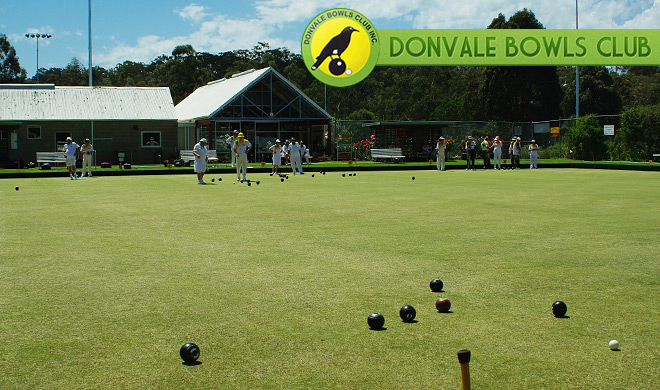Lighthouse clubs – Donvale Bowls Club
Ten years ago, Donvale Bowls Club was down and nearly gone.
Membership was threatening to drop below 50 – a critical health indicator for Melbourne metropolitan clubs.
“We were nearly gone,” says pennant championship committee president Graham Howard.
“We survived by getting members to pay their membership fees early, and we made some big mistakes. We reduced the greenkeeper’s hours. That later caused problems with our grass green and it cost us much more to fix.”
Donvale faced a decision. Did they want to keep going?
Initially they looked at merging with a neighbour club. But that did not come to be.
In AFL terms, Donvale are Hawthorn post the failed 1990s merger with Melbourne.
These days they have more than 200 members. They have teams in Division 1 both midweek and Saturday. They have six teams in the Saturday pennant comp and seven on a midweek.
Donvale’s Wednesday night twilight bowls – $14 for coaching, social bowls, and a feed afterwards – regularly draws 50-plus people each session over the summer months. It’s mainly as a feeder for new bowlers into the club from their various initiatives like Try Bowls days.
Healthy, thriving, relevant in the community and within Victorian bowls, Donvale would appear to have delivered on its mission statement – to be a vibrant, growing and successful club.
Graham Howard walks us through some of the steps Donvale, based in Melbourne’s eastern suburbs, took along the way to surviving and thriving:
What were the key steps in rebuilding the club?
The first thing was deciding we wanted to stay around. Then you have to have a plan, and not a short-term plan. We got together and the first thing was to put a plan together, and we sold it to (Manningham) Council. We put together a five-year plan which took us to 120 members. We still go in to Council every six months and tell them how we’re going, and update them on what we’re doing as a club. We want to be a growing, vibrant, successful club. We have targets under each of those key goals that we measure.
What changes did you make initially?
Culture – the way we are – is important. We said we were going to have to change the way we did things. We focused on new bowlers, coaching, becoming financial and improving our facilities. We were a small friendly club and that is still our goal even as membership grows.
What is Donvale like now?
We are one club – pennant and social bowls – young and old, male and female etc. We are proud of the fact we have people in our Division 1 Saturday team, from early 20’s to… well, it’s a secret! We have young lady skips and thirds and we select teams on performance. Not just “say”, we “do”. Rule number one is we want to have fun and enjoy our bowls, but we also found we have more fun when we win. We say, and we are proud of this, that we dare to be different.
As we progressed, we replaced our artificial green surface, extended and improved our pavilion and updated nearly everything else. Shade cloth, seats, new barbecue facilities, scoreboards.
How do you increase, and maintain, your membership base?
Firstly there are plenty of “baby boomers” around looking for opportunities as they retire AND we look to develop young people as well. We see membership as a process. But firstly, you need to get people to the club, and to put down bowls. We take people’s names, phone numbers and email when they come here. Then our programs link to twilight bowls, which we hope can get them into the club.
We don’t poach players. Some good players come to us. When we had 60 members, we’d found that each year we’d lose six. Now we’re at 200, we lose 20. So every year you’ve got to get 20 new bowlers just to stay where you are. And at the end of the year, we don’t just want to get 20, we want to get 40 so we grow. We are aiming for 220 this year.
What’s next for Donvale Bowls Club?
As 10 years has passed we are actually starting again. We’re planning to shortly replace our artificial green – now 10 years old – improve our kitchen facilities (adequate for 60 but not 200) and then finalise whether to install a new third green.
Continue to focus on developing our members – we have 15 coaches and eight umpires and we aim to develop all members to be able to play to their ability and at the level they can.
We will continue to set challenging goals, develop plans to achieve these, implement and review and refocus if need be. We have moved through stabilising the club, rejuvenation, and now we’re looking to evolving into a sustainable club – vibrant, growing and successful in all we do, not just pennant.
The journey is the destination.




